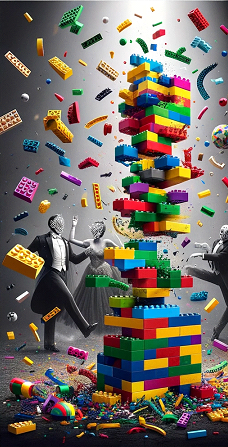Stage Four – Rubedo: The Activation of Lived Integration
A Clinical Essay on Embodied Continuity and Social Emergence Introduction Rubedo is the fourth and final stage in the classical alchemical model of transformation. Translated as “the reddening,” it marks the point at which integration becomes embodied and visible. In psychological and therapeutic work, Rubedo is the phase where identity is no longer being formed — it is being lived. It is not the absence of difficulty, but the presence of capacity. The person who once collapsed (Nigredo), reorganized (Albedo), and stabilized (Citrinitas) is now capable of sustained self-direction, internal continuity, and relational engagement without performance. Rubedo does not signify the end of struggle. It marks the shift from surviving to self-authored living. It is where previously fragmented or suppressed aspects of the self are not only integrated but acted upon. The client becomes a participant in their own life — responsive, self-responsible, and present in real time. This essay outlines the structure of Rubedo, how it presents clinically, what internal and external shifts are common, and the ethical responsibility of clinicians to support continued integration without overdefining the process as “complete.” Client Presentation in Rubedo Clients entering Rubedo typically demonstrate emotional regulation, internal clarity, and increased relational discernment. The language used shifts from self-analysis to self-reference: “This is what I believe,” “This is what I choose,” “This is how I will move through this.” These statements are not performances. They reflect an internally organized self. Symptoms such as emotional reactivity, dissociation, or intrusive thoughts may still arise, but they are managed with consistency. The client is no longer afraid of their own internal states. There is a felt sense of stability even under pressure. Insight is balanced by embodiment — clients not only understand their patterns, they actively interrupt and redirect them. Behaviorally, the client begins to participate differently in their environment. Decisions reflect aligned values, not external validation. Relationships are chosen, sustained, or ended from a place of clarity. Boundaries are maintained without collapse or aggression. In many cases, clients in Rubedo are no longer surviving the system they came from — they are now shaping the systems they belong to. Clients in this stage often describe a new relationship to time. They no longer feel stuck in the past, disconnected in the present, or afraid of the future. They can reflect, plan, and pause without losing internal structure. This is not a linear sense of progress. It is the return of relational time — the ability to be with themselves and others across moments without fragmentation. Therapeutic Function at the Rubedo Stage The role of the clinician changes in Rubedo. The therapist is no longer the primary site of reflection or regulation. The client has developed an internal system capable of self-witnessing, emotional accountability, and grounded choice-making. The therapist becomes a collaborator, occasionally a mirror, and often a witness. It is essential that clinicians do not confuse visible functionality with completion. Rubedo is not a plateau. It is a turning point. The client is more visible and more exposed than at any previous stage. Their structure is coherent, but still in active relationship with complex environments — family systems, institutional contexts, and cultural histories that may not have changed alongside them. Clinicians should continue to: Protect the client’s pace, especially around external expectations of performance or “success” Encourage ongoing articulation of boundaries, values, and meaning-making practices Track reemerging survival patterns under stress without pathologizing them Hold space for grief that may surface as new levels of clarity reveal deeper historical or relational losses Normalize that integration does not always feel good — sometimes it feels like letting go of what was once necessary Rubedo is not the celebration of healing. It is the capacity to stay intact when the world does not affirm that healing. Structural Risk and External Reality This stage brings a new set of clinical tensions. Many clients realize, often for the first time, that the internal coherence they’ve built does not guarantee external validation. Systems may still expect the performance of the former self. Families may resist new boundaries. Institutions may punish clarity, especially from clients who were previously compliant, invisible, or accommodating. The risk in Rubedo is not relapse — it is rupture by environment. Clients who have integrated themselves internally may find their external world incompatible. The therapist must help the client hold this without collapsing the progress. The goal is not to make the world safe. The goal is to keep the client safe while navigating it. This may involve helping the client name when they are being reabsorbed into dynamics they have outgrown. It may involve supporting them through the loss of connection to people or places that no longer recognize their current form. These moments require clinical presence, not intervention. The client does not need to be protected from their reality — they need to be supported through it, while maintaining alignment with their self. Conclusion Rubedo is the activation of integration. It is not perfection, resolution, or peace. It is coherence under pressure. It is voiced without rehearsal. It is the structure that holds across context, memory, and time. The client who lives in Rubedo is not done — they are equipped. This stage matters because it makes transformation livable. Not in ideal conditions, but in the world as it is. It confirms that collapse can lead to clarity, that disintegration can become direction, and that recovery is not a return — it is an arrival into something newly constructed, owned, and sustained. Rubedo completes the arc, not with finality, but with continuation. The work does not end here. It begins again — this time with tools, with memory, and with self intact.
Stage Four – Rubedo: The Activation of Lived Integration Read More »

